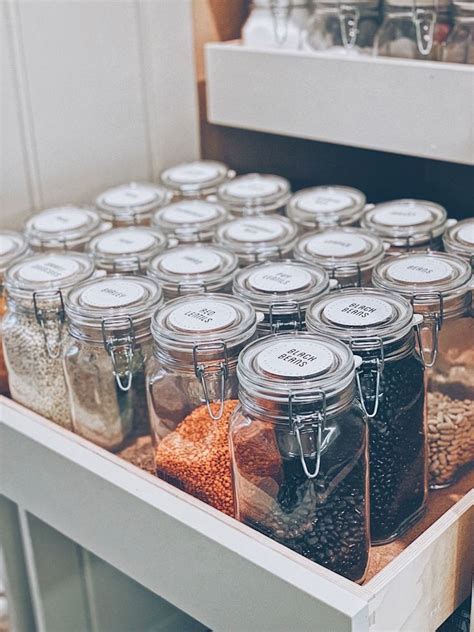
Bye Bye Baggies! Ditch Plastic & Embrace These Eco-Friendly Alternatives
The era of single-use plastic resealable bags is waning as consumers and environmental advocates increasingly recognize their detrimental impact on the planet. Driven by concerns over pollution, resource depletion, and the proliferation of microplastics, a growing movement is encouraging individuals and households to adopt sustainable alternatives that minimize environmental harm without sacrificing convenience.
The reliance on plastic baggies, often used for food storage, snacks, and organizing household items, contributes significantly to plastic waste. “Plastic baggies are a huge source of single-use plastic waste that is unfortunately used for just a few minutes, hours or even a day and then thrown away to sit in landfills,” says Ariane Machin, sustainability expert and founder of The Green Zone, as cited by Yahoo! Life. This waste accumulates in landfills, pollutes oceans, and breaks down into microplastics that contaminate ecosystems and potentially enter the food chain.
This article explores a range of eco-friendly alternatives to plastic baggies, examining their benefits, drawbacks, and practical applications. From reusable silicone bags and beeswax wraps to glass containers and fabric pouches, the options provide consumers with viable solutions to reduce their plastic footprint and contribute to a more sustainable future.
The Environmental Cost of Plastic Baggies
The ubiquity of plastic baggies belies their significant environmental cost. Primarily composed of polyethylene, a petroleum-based plastic, their production relies on fossil fuels, contributing to greenhouse gas emissions and climate change. The manufacturing process also requires substantial energy and water resources, further exacerbating their environmental impact.
Moreover, the disposal of plastic baggies presents a major challenge. While some plastic baggies are technically recyclable, the reality is that a small percentage actually make it into recycling streams. “The truth is, they’re difficult to recycle due to their thin nature, and they often end up contaminating recycling streams,” Machin explains. This contamination can disrupt the recycling process and lead to entire batches of recyclable materials being rejected, ultimately ending up in landfills.
In landfills, plastic baggies can take hundreds of years to decompose. During this time, they can leach harmful chemicals into the surrounding soil and water. Even more concerning is the breakdown of plastic into microplastics, tiny particles that can persist in the environment for extended periods. Microplastics have been found in oceans, rivers, soil, and even the air, posing a potential threat to human and animal health. These microplastics can be ingested by marine life, birds, and other animals, accumulating in their tissues and potentially disrupting their biological functions. The long-term effects of microplastic exposure on human health are still being studied, but preliminary research suggests potential risks associated with inflammation, endocrine disruption, and even cancer.
The environmental concerns surrounding plastic baggies highlight the urgent need for sustainable alternatives that minimize pollution, conserve resources, and protect ecosystems.
Exploring Eco-Friendly Alternatives
Fortunately, a variety of eco-friendly alternatives to plastic baggies are available, offering consumers a range of options to suit their individual needs and preferences. These alternatives are designed to be durable, reusable, and easily cleaned, making them a practical and sustainable choice for everyday use.
-
Reusable Silicone Bags: Silicone bags are a popular alternative to plastic baggies due to their durability, versatility, and ease of cleaning. Made from food-grade silicone, these bags are heat-resistant, freezer-safe, and dishwasher-safe, making them suitable for storing a wide range of foods. They are also leak-proof and airtight, helping to keep food fresh and prevent spills. Silicone bags come in various sizes and shapes, making them ideal for storing snacks, sandwiches, leftovers, and even liquids. While they have a higher upfront cost than plastic baggies, their reusability makes them a cost-effective option in the long run. Furthermore, silicone is generally considered safe and non-toxic, although some concerns have been raised about potential leaching of chemicals at high temperatures. However, reputable brands typically use high-quality silicone that is tested to be safe for food contact.
-
Beeswax Wraps: Beeswax wraps are a natural and biodegradable alternative to plastic wrap and baggies. Made from cotton fabric coated with beeswax, tree resin, and jojoba oil, these wraps are moldable and can be used to cover bowls, wrap sandwiches, and store fruits and vegetables. The beeswax coating creates a breathable and moisture-resistant barrier that helps to keep food fresh. Beeswax wraps are reusable and can be cleaned with cool water and mild soap. With proper care, they can last for several months. When they are no longer usable, they can be composted, making them a truly sustainable option. However, beeswax wraps are not suitable for storing raw meat or fish, and they should not be exposed to high heat.
-
Glass Containers: Glass containers are a classic and versatile option for food storage. They are durable, non-reactive, and easy to clean, making them a safe and reliable choice for storing a wide range of foods. Glass containers are also transparent, allowing you to easily see what’s inside. They come in various sizes and shapes, from small jars to large bowls, and can be used for storing leftovers, meal prepping, and organizing pantry items. Glass containers are also oven-safe and microwave-safe, making them convenient for reheating food. While glass is heavier and more fragile than plastic, its durability and reusability make it a sustainable choice.
-
Fabric Pouches: Fabric pouches, made from cotton, linen, or other natural fibers, are a simple and eco-friendly alternative to plastic baggies for storing dry goods. These pouches can be used for storing snacks, nuts, seeds, grains, and even sandwiches. Fabric pouches are reusable and washable, making them a sustainable option. They are also breathable, allowing air to circulate and preventing food from becoming stale. Fabric pouches can be easily sewn at home, or purchased from various retailers. They are a lightweight and portable option for carrying snacks on the go. However, they are not suitable for storing liquids or foods that require airtight storage.
-
Reusable Produce Bags: While often overlooked in the baggie discussion, reusable produce bags provide an alternative for fruits and vegetables that often end up in smaller plastic bags at the grocery store. Made of mesh or thin, washable fabric, these bags help reduce the number of plastic bags used during shopping.
-
Compostable Baggies: For situations where a baggie is truly needed and a reusable option isn’t feasible, compostable baggies present a lesser-of-two-evils choice. These bags are typically made from plant-based materials and designed to break down in a commercial composting facility. However, it’s important to note that they often require specific composting conditions to decompose properly and may not break down effectively in a backyard compost pile. Also, availability may be limited depending on location.
Making the Switch: Practical Tips and Considerations
Transitioning from plastic baggies to eco-friendly alternatives requires a conscious effort and a shift in habits. However, with a little planning and preparation, it can be a seamless and rewarding process. Here are some practical tips and considerations for making the switch:
-
Assess your needs: Before investing in a range of alternatives, take stock of how you currently use plastic baggies. What types of foods do you typically store? What sizes and shapes do you need? This will help you determine which alternatives are best suited for your lifestyle.
-
Start small: Don’t feel pressured to replace all your plastic baggies at once. Start by replacing them gradually, one at a time. This will allow you to experiment with different alternatives and find what works best for you.
-
Invest in quality: Choose durable and well-made alternatives that will last for a long time. While cheaper options may be tempting, they may not be as durable or reliable, ultimately costing you more in the long run.
-
Proper cleaning and care: To extend the life of your reusable alternatives, be sure to clean and care for them properly. Follow the manufacturer’s instructions for cleaning and storage.
-
Get creative: Don’t be afraid to get creative with your alternatives. Use glass jars for storing pantry items, fabric pouches for carrying snacks, and beeswax wraps for covering bowls.
-
Embrace imperfections: Sustainable living is not about perfection, it’s about making conscious choices to reduce your environmental impact. Don’t get discouraged if you occasionally slip up and use a plastic baggie. Just keep striving to make more sustainable choices in the future.
-
Advocate for Change: Beyond personal choices, support businesses and policies that promote sustainable practices. Vote with your wallet and your voice to encourage broader adoption of eco-friendly alternatives.
The Future of Food Storage
The growing awareness of the environmental impact of plastic baggies is driving innovation in the food storage industry. Companies are developing new and improved eco-friendly alternatives that are more durable, versatile, and affordable.
For example, some companies are developing biodegradable plastics made from plant-based materials, such as cornstarch or sugarcane. These plastics are designed to break down more quickly than traditional plastics, reducing their environmental impact. However, the biodegradability of these plastics depends on specific composting conditions, and they may not break down effectively in landfills.
Other companies are exploring innovative materials, such as mycelium (mushroom roots), to create sustainable packaging solutions. Mycelium is a renewable and biodegradable material that can be molded into various shapes and sizes. It is also naturally fire-resistant and water-resistant.
The future of food storage is likely to be characterized by a greater emphasis on sustainability, with a wide range of eco-friendly alternatives available to consumers. As technology advances and consumer demand grows, these alternatives will become more affordable and accessible, making it easier for individuals and households to reduce their plastic footprint.
The Benefits Beyond the Environment
While the primary motivation for switching to eco-friendly alternatives is environmental sustainability, there are also several other benefits to consider.
-
Health Considerations: Many plastic baggies contain chemicals that can leach into food, especially when heated. Switching to glass, silicone, or beeswax wraps eliminates this concern, providing a safer storage option.
-
Cost Savings: While the initial investment in reusable alternatives may be higher, the long-term cost savings can be significant. Eliminating the need to constantly purchase plastic baggies can save money over time.
-
Aesthetics: Eco-friendly alternatives, such as glass containers and fabric pouches, can add a touch of style and organization to your kitchen and pantry.
-
Reduced Clutter: By eliminating the need for endless rolls of plastic baggies, you can reduce clutter in your kitchen and simplify your life.
Conclusion
The time to ditch plastic baggies is now. By embracing eco-friendly alternatives, consumers can significantly reduce their environmental impact, conserve resources, and protect ecosystems. From reusable silicone bags and beeswax wraps to glass containers and fabric pouches, there are a wide range of options available to suit individual needs and preferences. Making the switch requires a conscious effort and a shift in habits, but the benefits are well worth it. By choosing sustainable alternatives, we can create a more environmentally friendly future for ourselves and generations to come. “Switching to reusable alternatives can make a big impact and drastically reduce your carbon footprint,” Machin concludes. The transition requires effort, but the long-term benefits for the planet and personal well-being make it a worthwhile endeavor.









